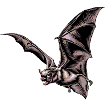Museum, University of Nebraska State

University of Nebraska State Museum: Mammalogy Papers
Document Type
Article
Date of this Version
Fall 2011
Abstract
Archeological and paleontological records indicate that the pronghorn (Antilocapra americana) have a history of at least 20,000 years of occurrence within the current boundaries of Nebraska. Pronghorns occurred throughout the state for much of its history. With the evidence at hand we concluded that the eastern boundary of the geographic distribution of the pronghorn south of the Niobrara River in Nebraska at the beginning of the 19th century was along the western perimeter of the eastern deciduous forest and tallgrass prairie. This excluded most of the easternmost tier of counties in the state. This geographic arrangement persisted throughout most of the Holocene. The boundary, however, was never a straight line, but a dynamic system of fluctuating distribution. By the early 20th century, the pronghorn was nearly extirpated from Nebraska, with only scattered herds in the western panhandle. With a ban on hunting beginning in 1907 and management by the Nebraska Game and Parks Commission, the population in the panhandle had increased to the point that a hunting season was reinstituted in 1953. To establish herds of pronghorns in previously occupied areas beyond the panhandle, 1,106 individuals were translocated between 1958 and 1962 primarily to the Sandhills region of Nebraska. Currently, the pronghorn possess stable populations throughout nearly half of Nebraska, including the panhandle and most of the Sandhills.


Comments
Published in Great Plains Research 21 (Fall 2011):153–173. © 2011 Copyright by the Center for Great Plains Studies, University of Nebraska–Lincoln. Used by permission.